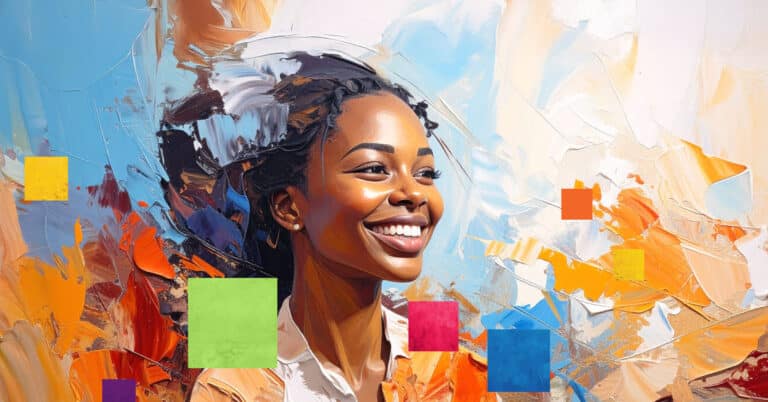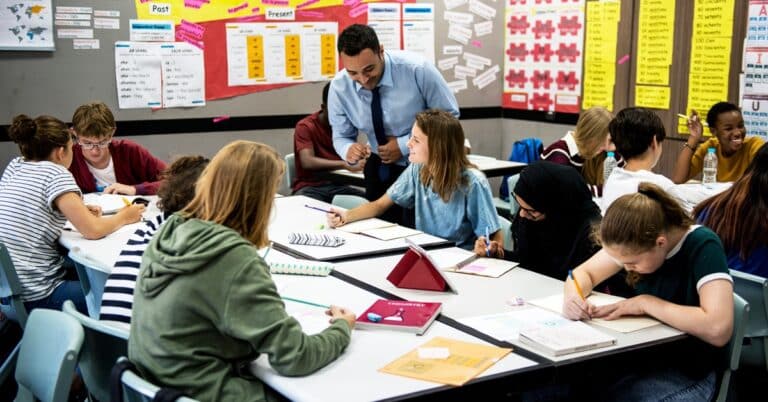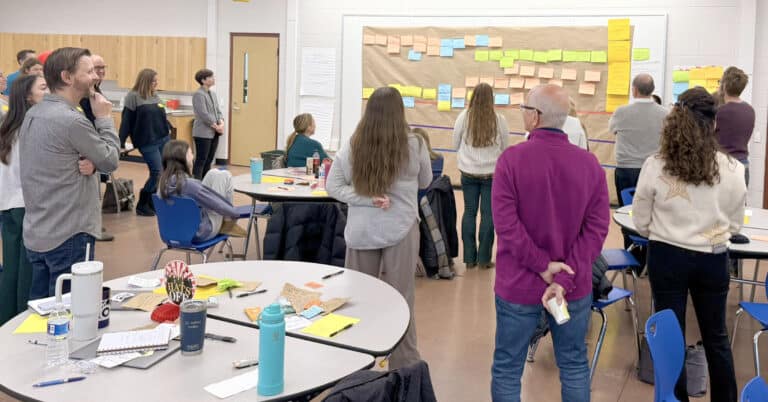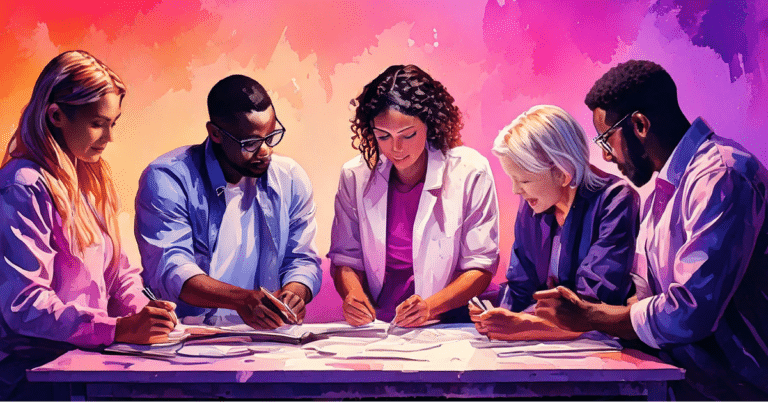When asked about how she came to the Ohio Personalized Learning Network, Heather Townley felt it was an approach to education that could “change everything.”
“We could look back and say, that was when it changed,” said Townley, who has been an educator for more than 20 years and whose passion for doing teaching and learning differently is what drew her to the network. While teaching incarcerated adult learners in a high-security male prison, Townley explained that she learned “prison is not filled with bad people; it’s people who made a bad choice, had bad friends, lacked an education. I worked with adult men who had children they couldn’t read to because they’d never learned to read. I thought, I have to go back to the kids, to help them before they end up here.”
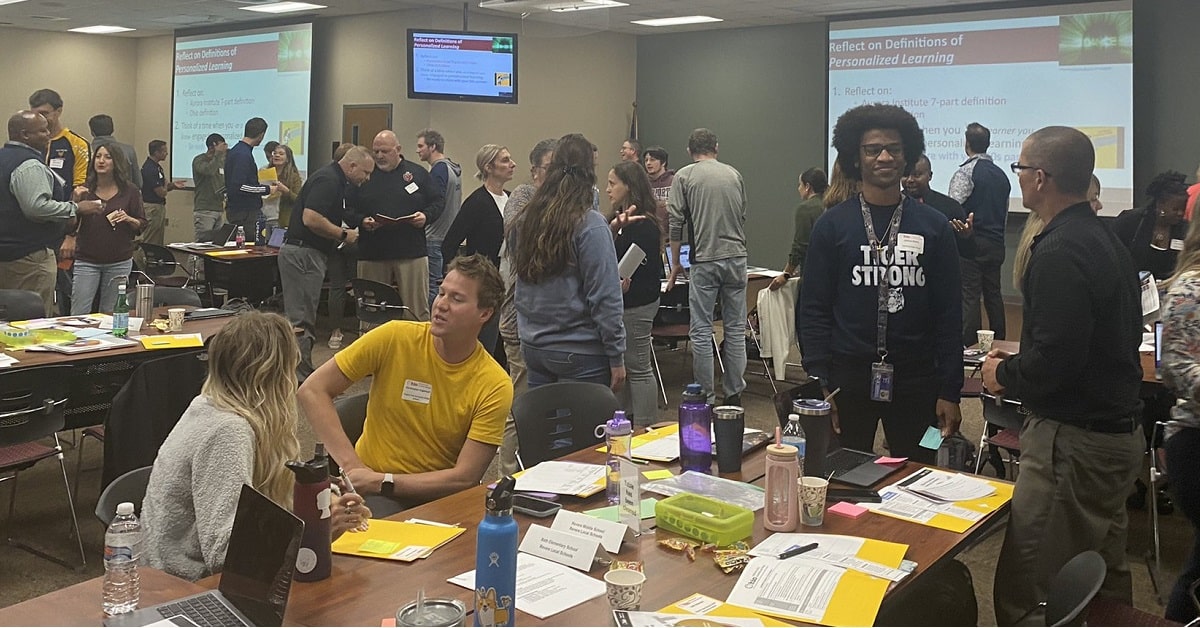
The Ohio Personalized Learning Network aims to provide multiple professional learning pathways to help Ohio educators personalize learning for each student. Townley serves as one of the network’s personalized learning specialists, who will support teachers and districts as they work to collaborate and learn from each other and expand personalized learning from the classroom to the district. Townley had a great deal to say about where she’s been and where she hopes to see education go.
Why did you want to be involved with the Ohio Personalized Learning Network?
The network is everything that I believe in. I’d been working with the most incredible people in an urban district in northwest Ohio as their gifted coordinator. They believed in the things they wanted to do: seeing and serving every student. It was so hard to walk away from that; you don’t find people who just believe in you. But the chance to be a part of history, finally moving forward from a factory education model – how can you say no?
Why do you think personalized learning is important for today’s students?
Something has to change. We’ve done school for so long the same way: the bells, the rows, kids in the same grade because of their age. I met two sixth graders last year who couldn’t read. And my youngest is 15, she’s always struggled with math. She told me recently, “I think I know why math is so hard for me. I don’t know how to multiply.” She said that she remembered learning it, and that it didn’t quite make sense, but that they just moved on. This isn’t working. My 18-year-old is highly gifted, but he’s also an unhealthy perfectionist and an underachiever. At 15, had all of his testing points because he’d been accelerated and wanted to know, why do I have to keep going to school? He got it.
Personalized learning isn’t just adding something to your repertoire. It’s not just thinking outside the box. It’s getting rid of the box. We’re rebuilding something, and learners are now at the center. We make every decision around our learners. There are so many incredible teachers doing these incredible things, but not been given that space to fully realize what they want for our students.
Networks are powerful tools for change for their ability to scale and collaborate. Learn how Remake Learning leads the way in the greater Pittsburgh area.
Watch now >>
Why do you feel it’s important to support educators as they transition to more learner-centered practices? What is the value in providing opportunities to collaborate and learn from peers?
It should be the norm to work together. I don’t know how to build a garage. If my garage was broken, I would rather have friends come and help me. I could figure it out, watch YouTube videos, but to have people around me who can say, measure that first, use this, I’ll do this while you’ll do that. It’s important to have a network of people who support each other. It’s easy to go back to the way things were without accountability.
When I worked as a teacher mentor at the largest online school in the state, I saw hundreds of educators. I could see all the cool stuff they did, and I could steal it. But at my first teaching experience in a building, everybody closed their door. Was my door not allowed to be open? My teaching style and your teaching style would be different – we may have some similarities but we’d be different. Sharing your individual skills and somebody seeing a piece and thinking, I’ve never tried that, I’ve never thought of it that way, instead of closing our doors and doing it independently.
What do you want others to know about beginning their journey to personalized learning?
I had the opportunity to convene with educators in North Dakota doing personalized learning. Before I left, I was so excited to finally get the binder. Because education always has the binder, color-coded, with the tabbed dividers. I called it that. When I get home, I’m going to memorize all the steps. I’m so ready, I told my husband. I was going to inhale information and exhale perfection.
It was the second day of the conference when I realized, we’re not going to get a binder. I said it out loud. Though many of the stories we heard were similar, they were all told in different ways. It always came back to the kids. In order to do personalized learning, we have to recognize that every building, district, community, teacher and student is different. If there was a binder it would be very counter intuitive.
Instead of a binder, we get to go into a district or school and say, where do you want to start? What’s your biggest gap right now? What’s your strategic plan? What’s the language you’re speaking? It doesn’t matter what I think is the priority. If we’re both talking about kids mattering the most, that’s the lens.
What is the role of a personalized learning specialist?
My role is asking really good questions and being a really good listener. I can regurgitate information and sound funny or smart but true, true change like what we’re talking about is happening with really good questions and really good listening. That’s what we want for our students, so that’s what we have to do for each other.
There is no curriculum to purchase; you have curriculum. You don’t have to buy certain things. Remember, we’re building from the beliefs of the district with students at the center. It’s a shift in thinking. We really can determine our path, we can make purposeful decisions to get us where we want to be.
What a wonderful way to spend the day: touring @MasonSchools and learning with thought leaders from Ohio’s personalized learning network and KnowledgeWorks! pic.twitter.com/RmgfZqelps
— KrissyHufnagel (@KrissyHufnagel) September 28, 2022
Personalized Learning Specialists @AmySHarker and @mcclurgmissy are teaching us about the @InstituteAurora’s work as we kickoff #personalizeoh’s first Cohort of Launch Schools!
Look at this room!! So many awesome educators! pic.twitter.com/a5FGb1csJJ
— Jake Miller (@JakeMillerTech) September 27, 2022
For Townley, this is a critical moment to try something different to better support all learners.
“Through this work my eyes have been opened to things I believed in my heart but couldn’t articulate. Something crazy just happened in the world. We owe it to children to learn something and make a positive change from it,” Townley said. “If we just go back to how things were, we learned nothing, and we’re not advocating for them.”
Creating transformational learning experiences requires commitment, collaboration and capacity building among stakeholders. Connect, share resources and reflect with personalized learning peers across the country. Join the national Lead for Learners network today!
This was written by former Senior Manager of Communications Jillian Kuhlmann.

